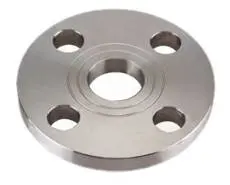-
Cangzhou Yulong Steel Co., Ltd.
-
Phone:
+86 13303177267 -
Email:
admin@ylsteelfittings.com
- English
- Arabic
- Italian
- Spanish
- Portuguese
- German
- kazakh
- Persian
- Greek
- French
- Russian
- Polish
- Thai
- Indonesian
- Vietnamese
- Zulu
- Korean
- Uzbek
- Hindi
- Serbian
- Malay
- Ukrainian
- Gujarati
- Haitian Creole
- hausa
- hawaiian
- Hebrew
- Miao
- Hungarian
- Icelandic
- igbo
- irish
- Japanese
- Javanese
- Kannada
- Khmer
- Rwandese
- Afrikaans
- Albanian
- Amharic
- Armenian
- Azerbaijani
- Basque
- Belarusian
- Bengali
- Bosnian
- Bulgarian
- Catalan
- Cebuano
- China
- China (Taiwan)
- Corsican
- Croatian
- Czech
- Danish
- Esperanto
- Estonian
- Finnish
- Frisian
- Galician
- Georgian
- Kurdish
- Kyrgyz
- Lao
- Latin
- Latvian
- Lithuanian
- Luxembourgish
- Macedonian
- Malgashi
- Malayalam
- Maltese
- Maori
- Marathi
- Mongolian
- Myanmar
- Nepali
- Norwegian
- Norwegian
- Occitan
- Pashto
- Dutch
- Punjabi
- Romanian
- Samoan
- Scottish Gaelic
- Sesotho
- Shona
- Sindhi
- Sinhala
- Slovak
- Slovenian
- Somali
- Sundanese
- Swahili
- Swedish
- Tagalog
- Tajik
- Tamil
- Tatar
- Telugu
- Turkish
- Turkmen
- Urdu
- Uighur
- Welsh
- Bantu
- Yiddish
- Yoruba

oct. . 11, 2024 14:55 Back to list
mild steel mandrel bends
Understanding Mild Steel Mandrel Bends
Mild steel mandrel bends are essential components in various engineering and fabrication applications. These bends are created using mild steel, a versatile material known for its ductility, weldability, and relatively low cost. This article explores the significance, manufacturing process, applications, and advantages of mild steel mandrel bends.
Mild steel, also referred to as carbon steel, contains a low amount of carbon, typically around 0.05% to 0.25%. This composition grants it excellent malleability, making it ideal for bending processes. Mandrel bending is a method where a rigid internal support, or mandrel, is used to maintain the shape and prevent collapsing during the bending process. This technique ensures that the bend maintains its integrity, offering a smoother radius and minimizing distortion that can often occur in cold bending methods without support.
The manufacturing process begins with cutting the mild steel pipe or tube to the desired length. The steel is then heated, if necessary, followed by placing it into a mandrel bender machine. The mandrel is inserted inside the pipe to support the internal structure as the pipe is bent around a die. This results in a precise and smooth curvature, which is crucial for the performance of the final product, especially in applications where flow dynamics are essential, such as in piping systems.
mild steel mandrel bends

Mild steel mandrel bends find extensive use across various industries. One of the most common applications is in the automotive industry, where they are used in exhaust systems, roll cages, and chassis. The smooth bends ensure efficient gas flow and structural integrity, contributing to the overall performance of the vehicle. Additionally, these bends are prevalent in the construction industry for creating sturdy frameworks and supports, as well as in HVAC systems where they facilitate airflow without significant pressure loss.
The advantages of using mild steel mandrel bends are numerous. Firstly, the bend quality is superior due to the support provided by the mandrel, meaning decreased risk of tearing or kinking. This quality is particularly important for applications that require high precision. Secondly, mild steel is cost-effective, making it an attractive option for large-scale projects. Moreover, the material can be easily welded, allowing for seamless integration into various structures.
However, it is essential to note that mild steel is susceptible to corrosion, necessitating proper treatment or protective coatings, especially in outdoor applications. Proper care and maintenance can ensure longevity and reliability of mild steel mandrel bends, even in harsh environments.
In conclusion, mild steel mandrel bends represent a critical component in modern manufacturing and engineering. Their unique properties, coupled with the advantages of the mandrel bending process, make them invaluable for various applications. As industries continue to innovate, the demand for high-quality, reliable bending solutions like mild steel mandrel bends is expected to grow, further solidifying their role in advanced engineering practices.
Latest news
-
ANSI 150P SS304 SO FLANGE
NewsFeb.14,2025
-
ASTM A333GR6 STEEL PIPE
NewsJan.20,2025
-
ANSI B16.5 WELDING NECK FLANGE
NewsJan.15,2026
-
ANSI B16.5 SLIP-ON FLANGE
NewsApr.19,2024
-
SABS 1123 FLANGE
NewsJan.15,2025
-
DIN86044 PLATE FLANGE
NewsApr.19,2024
-
DIN2527 BLIND FLANGE
NewsApr.12,2024
-
JIS B2311 Butt-Welding Fittings LR/SR 45°/90° /180°Seamless/Weld
NewsApr.23,2024











